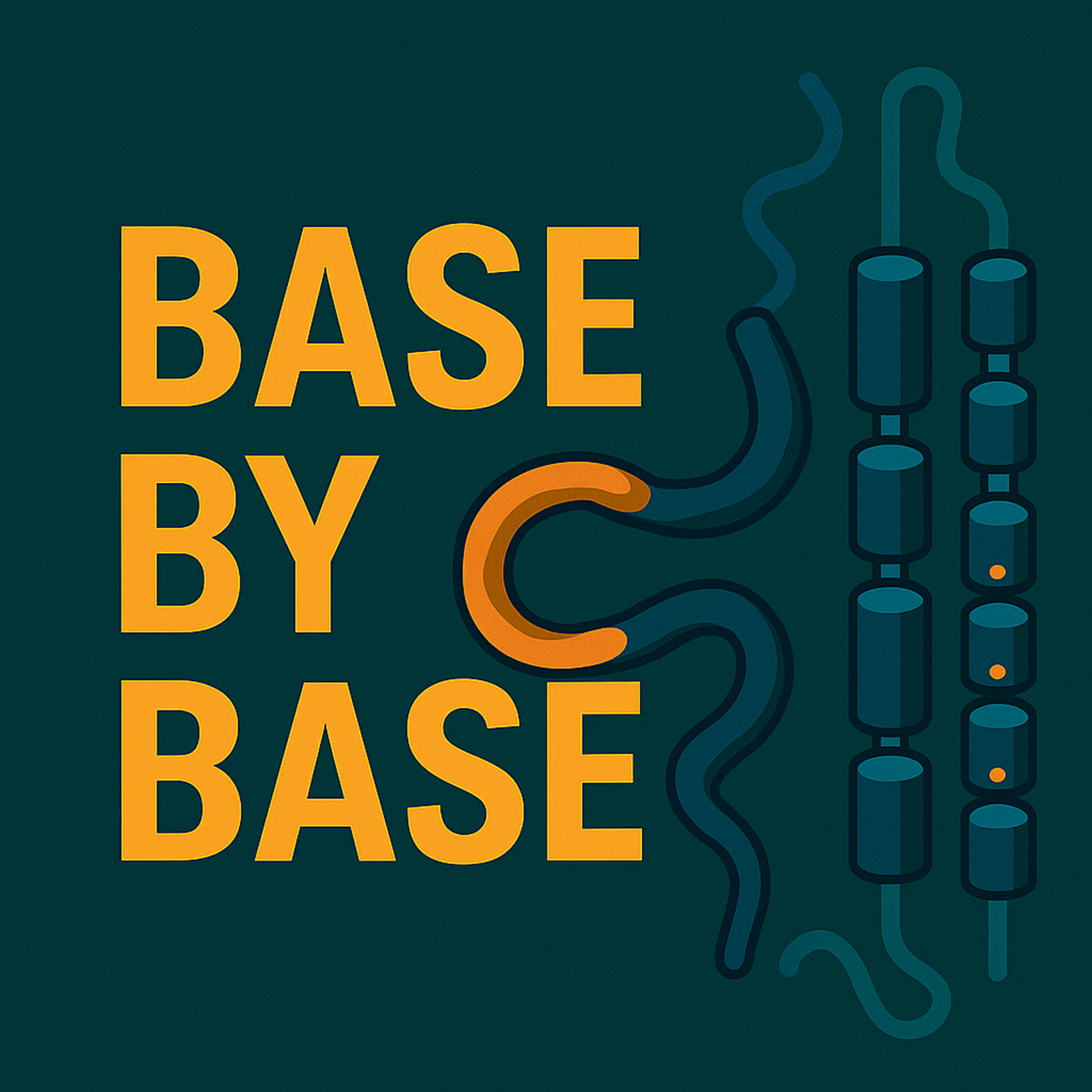Show Notes
️ Episode 47: Selectivity and Promiscuity — Decoding the Human Chemokine-GPCR Network
In this episode of Base by Base, we explore a systems-level framework unveiled by Kleist et al. (2025) in Cell, which dissects how selectivity and promiscuity arise in the intricate network of human chemokine-GPCR interactions. By combining structural biology, evolutionary conservation, and machine learning, the study reveals the molecular grammar that encodes receptor specificity and versatility across immune signaling pathways.
Study Highlights:
Chemokine-GPCR recognition is governed by a hierarchy of determinants — conserved, semi-conserved, and variable — distributed across structured cores and flexible loop regions of both ligands and receptors.
Promiscuity and selectivity are modulated through short linear motifs (SLiMs) in unstructured regions, which serve as tunable hotspots for binding specificity.
The team developed a chemokine numbering (CCN) and receptor numbering (CRN) system to align residues across families and quantify their conservation and variability.
Mutagenesis and binding assays confirmed that even minor changes in SLiMs can rewire binding preferences, as demonstrated through rational engineering of a viral chemokine (vMIP-II) to alter GPCR targeting.
A new public web resource was created to support sequence-structure-function studies and the design of therapeutic chemokines with tailored selectivity.
Conclusion:
This study proposes a unifying model where selectivity is “encoded” like a molecular password and “decoded” by matching elements on ligands and receptors — akin to digital encryption. By uncovering this code, researchers can now manipulate chemokine-GPCR interactions to modulate immune cell migration, offering promising avenues for immunotherapies, cell engineering, and infection control.
Reference:
Kleist, A. B., Szpakowska, M., Talbot, L. J., et al. (2025). Encoding and decoding selectivity and promiscuity in the human chemokine-GPCR interaction network. Cell, 188, 1–20. https://doi.org/10.1016/j.cell.2025.03.046
License:
This episode is based on an open-access article published under the Creative Commons Attribution 4.0 International license – CC BY 4.0




